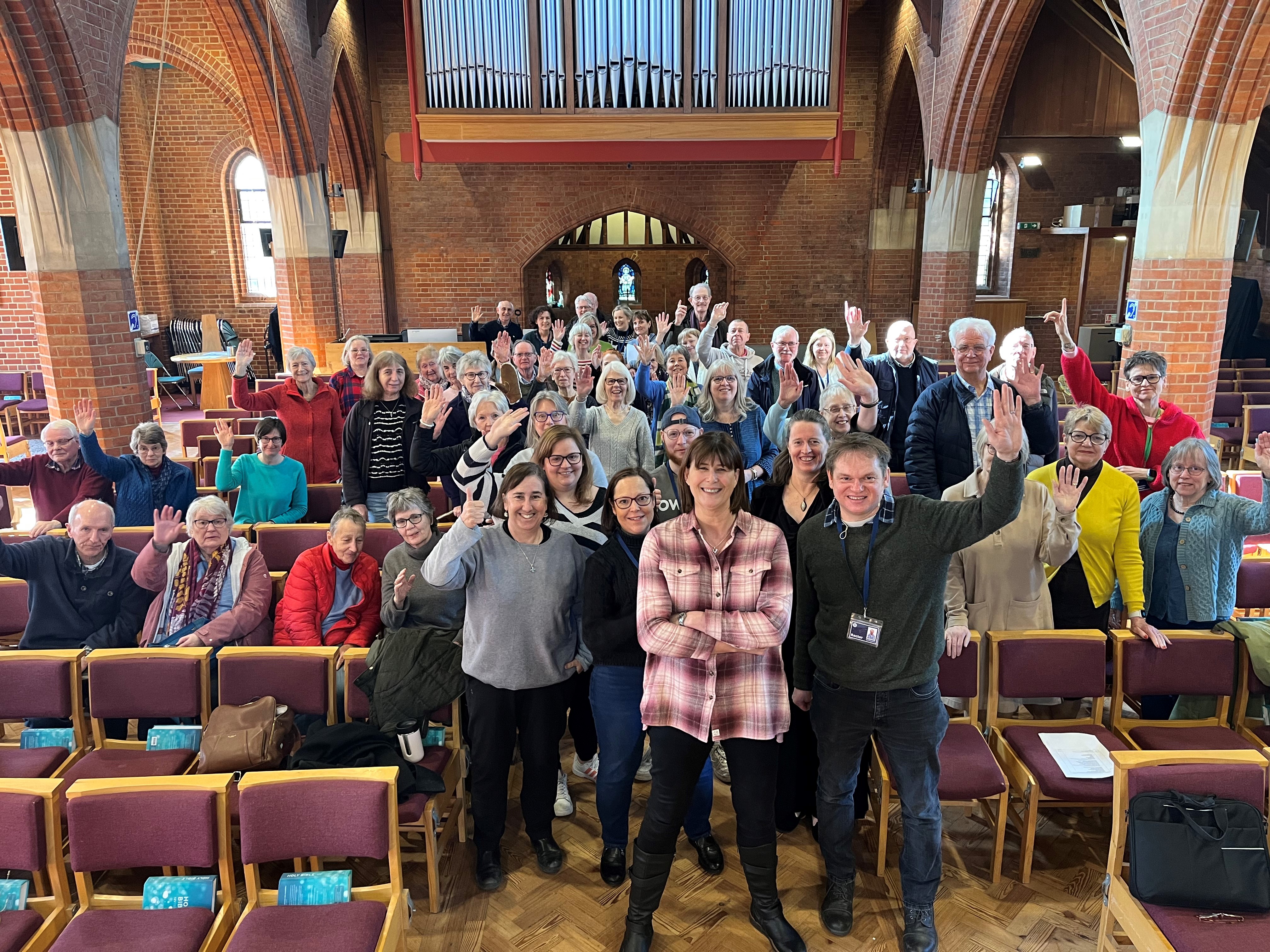The Revd Tom Darwent is the Rector of St Giles’ & St George’s, Ashtead, with a large intergenerational congregation of around 500 people.
Due to the large number of children and elderly people, Tom wanted to ensure that the church had a firm grip on safeguarding practice, and that the subject became more normalised.
The church recently held a safeguarding workshop which was facilitated by him and Jackie Broadfoot in the diocesan safeguarding team.

What does the term safeguarding mean to you? How does it align with your Christian faith and values?
It’s about keeping people safe but also about helping people feel safe.
The Bible has a lot to say about protecting and caring for children, the vulnerable and the poor and it is inspiring!
I have a strong commitment to making our church as safe as possible. At the recent workshop, I spoke about the importance of good safeguarding practice as well as how it intersects with what the Bible teaches us. I categorised this into five ‘Rs’.
-
It’s the right thing to do. Jesus went beyond welcoming children; He issued a powerful mandate to protect them. Throughout His ministry, Jesus made it clear that how we treat children reflects our understanding of God’s heart. In Mark 9:37, He says, “Whoever welcomes one of these little children in my name welcomes me.” Christians hold a sacred responsibility to honour, nurture, and protect the innocence of children.
-
It’s the responsible thing to do. But responsibility needs to be shared by us all. They say it takes a village to raise a child. But it also takes a whole community to keep a child or a vulnerable adult safe. By making sure everyone’s eyes are open to abuse, it reduces the risk of things slipping through the cracks.
-
A commitment to a safer church needs to be realistic. Abuse, harassment and exploitation are far more prevalent than many realise. We all must face up to that awful reality if we are to respond correctly.
-
Fourthly, safeguarding is relevant. It’s plain to see that the fall-out from the Makin review and the pain that has been caused to victims/survivors, has meant that we urgently need to respond and get our house in order. The wider community demands that we all do better to protect vulnerable people. Our mission depends on it, and so does our ability to earn and maintain trust from wider society.
-
Good safeguarding practice is required. The Church of England has very firm safeguarding procedures. The problems occur when people don’t implement them correctly. There is no more time for excuses. We must take our safeguarding responsibilities extremely seriously.
What steps do you take in your church to create a positive and proactive approach to safeguarding?
We recently held a workshop with Jackie from the diocesan safeguarding team. It was attended by around 60 people which was so encouraging. My main objective was to get anyone who works with youth or vulnerable people or in governance to feel empowered and knowledgeable about safeguarding, and equally able to protect someone.
The session was very interactive with no paperwork. When Jackie shared statistics on the prevalence of abuse, everyone in the room was stunned and realised that the victims could be our friends, family members, even others in the room. It was a sobering realisation, but it’s strengthened our determination to act urgently.
How else do you involve the whole church community in safeguarding?
Fundamentally children are far more at risk of abuse or continued abuse if they feel they can’t disclose to a trusted adult including their parents or carers. I want us to normalise the topic of safeguarding so that it can be a comfortable family conversation around the dinner table.
We’ve also recently introduced safeguarding themes in some of our sermons. At our Epiphany service, we demonstrated the role of wise men in protecting (or safeguarding) baby Jesus from the murderous King Herod.
We are also planning to arrange a workshop for the teenagers in our congregation to help them understand more about the grooming risks they may be exposed to, and how to keep themselves safe.
We have regular discussions on safeguarding at our PCC meetings and a safeguarding leadership team to check our progress on the various policies and processes. I’m pleased to say that our parish safeguarding dashboard is over 90% updated and we are continuing to progress.
How have attitudes to safeguarding changed during your ministry?
I have noticed significant changes even within the last year-prompted mainly by the national conversation following the Makin Review. It’s an awful thing but it’s been an opportunity to seize the momentum and drive real culture change in safeguarding. I’ve also noticed that even people who used to grumble about it being unnecessary paperwork, now fully understand the importance of good safeguarding practice.
How have your views or understanding on safeguarding changed?
Having spoken with victims, I now understand how deeply the scars from experiencing that abuse can run. If they are Christians and the abuse was perpetrated by another Christian or within a Christian community, then there are particular spiritual questions they wrestle with. Why did God let this happen? Or how could a Chirstian do this?
I am much more aware of this dynamic in my pastoral encounters as well as the stigma that many victims can feel that prevent them from reporting abuse.
How have you found working with the Diocesan Safeguarding Team?
Our experience with Jackie and her team has been very positive. They are very responsive when we’ve needed them. They haven’t just given us principles, but they have helped us with specific guidance and walked us through how to respond to certain situations.